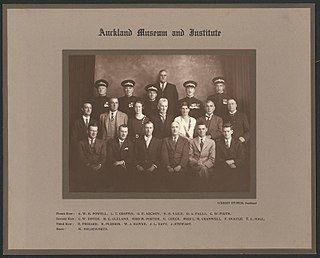
Leptospermum is a genus of shrubs and small trees in the myrtle family Myrtaceae commonly known as tea trees, although this name is sometimes also used for some species of Melaleuca. Most species are endemic to Australia, with the greatest diversity in the south of the continent, but some are native to other parts of the world, including New Zealand and Southeast Asia. Leptospermums all have five conspicuous petals and five groups of stamens which alternate with the petals. There is a single style in the centre of the flower and the fruit is a woody capsule.

Gradungulidae, also known as large-clawed spiders, is a spider family endemic to Australia and New Zealand. They are medium to large-sized haplogyne spiders with three claws and two pairs of book-lungs similar to Mygalomorphae. Some species build extensive webs with an upper retreat tangle and connecting threads to scaffolding. This supports the ladder-like catching platform that is glued to the ground. Progradungula, a large spider with long legs like Hickmania, and Macrogradungula are the only cribellate genera of the family.

Orsolobidae is a six-eyed spider family with about 180 described species in thirty genera. It was first described by J. A. L. Cooke in 1965, and was raised to family status from "Dysderidae" in 1985.

Arthur William Baden Powell was a New Zealand malacologist, naturalist and palaeontologist, a major influence in the study and classification of New Zealand molluscs through much of the 20th century. He was known to his friends and family by his third name, "Baden".

Tellina is a widely distributed genus of marine bivalve molluscs, in the family Tellinidae. It is also known as "tellin" in English.

Triviidae is a taxonomic family of small sea snails, marine gastropod molluscs in the superfamily Cypraeoidea of the order Littorinimorpha.
Seorsus is a genus of flowering plants in the family Myrtaceae. The occurrence of the four species in Australia and Borneo is widely spaced, and is thought to be indicative that the genus predates the breakup of Gondwana.
Ghilianella is a genus of true bug in the subfamily Emesinae. Fifty-eight species have been described, with a distribution from Guatemala to Brazil. The linear form of the species in this genus allow the young larvae to be carried about by the mother or perhaps the father. The larvae of the young can curl around the parent's thorax.
Empicoris subparallelus is a species of thread-legged bug found in Cuba and from two Southern US States.

Empicoris is a cosmopolitan genus of thread-legged bug (Emesinae). Numerous species have been described.

The Helosciomyzidae are a small family of flies found exclusively in the Southern Hemisphere. With the exception of the South American genus Sciogriphoneura, helosciomyzids occur only in Australia and New Zealand.
Dakoticancroidea is a superfamily of fossil crabs divided into the following two families:
Empicoris culiciformis is a species of predatory true bugs with a Holarctic distribution.
Barbara Lynette Rye is an Australian botanist born in 1952.
Underwoodisaurus seorsus is a species of lizard in the family Gekkonidae. It is endemic to the Packsaddle Range in western Australia.
Empicoris orthoneuron is a species of thread-legged bug in the family Reduviidae. It is found in Central America, North America, and South America.

Empicoris errabundus is a species of thread-legged bug in the family Reduviidae. It is found in the Caribbean, Central America, and North America.
Empicoris winnemana is a species of thread-legged bug in the family Reduviidae. It is found in North America.
Malcolm Eric Trudgen is a West Australian botanist. He has published some 105 botanical names. He currently runs his own consulting company, ME Trudgen and Associates.








